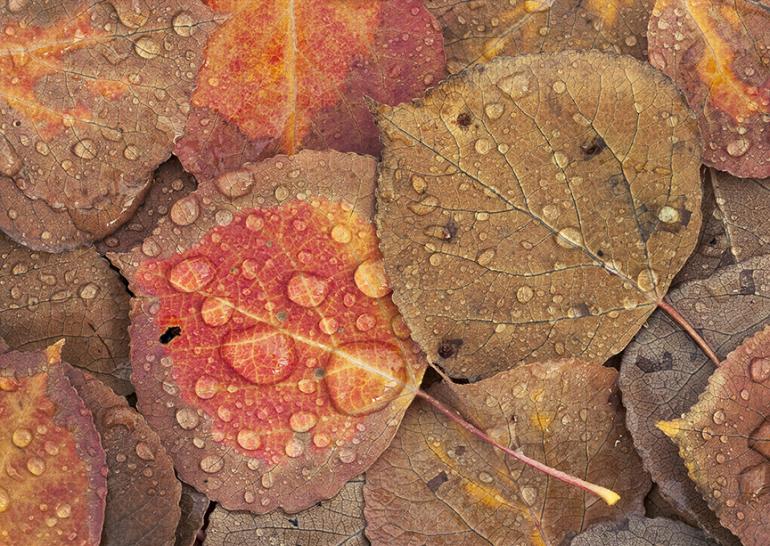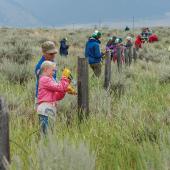The Roots of Fall Color
Until recently, scientists thought all the work Mother Nature put into creating fall’s astonishing colors served no ecological purpose—but they were wrong. As the nights grow noticeably longer and temperatures drop, the chemical that makes leaves green—chlorophyll—breaks down. This allows other chemicals that are already present in the leaves, such as xanthophylls and carotenoids, to emerge. Xanthophylls turn leaves yellow. Carotenoids turn leaves orange. Anthocyanins create red, scarlet, and purple leaves. Those red leaves are the ones helping scientists unlock the mystery of why leaves change colors at all.
For a long time, scientists believed fall leaves were little more than trash containers for unused and unneeded chemicals. Only when leaves fell to the ground, creating a thick carpet that fed insects and captured moisture while slowing erosion, did they seem to have any ecological value. Their chemicals became tannins as the decaying leaves turned brown, and the soil absorbed the tannins to feed the tree and other vegetation. But why would nature expend the energy to change the colors of leaves if it did not serve some purpose?
Many hypotheses seemed to focus on the protective role of the red leaves. Maybe they were a warning to insects and other creatures, or contained antioxidants that protected leaves from sun damage? One hypothesis, however, suggested that red leaves have wider implications. The hypothesis was, in fact, instrumental in pushing scientific research beyond the tree and into the ground.
In 2003, while he was at the University of Wisconsin at Madison, Bill Hoch (now an associate professor in the Department of Plant Sciences and Plant Pathology at MSU) hypothesized that trees produce anthocyanins to protect the leaves from damaging sunlight. The trees can recapture more nutrients from those leaves for winter storage. He went on to prove it in the laboratory.
Then in 2004, two researchers in North Carolina questioned why trees would need to maximize nutrient reabsorption. Graduate student Emily Habinck and her mentor Martha Eppes, a soil scientist and assistant professor of earth sciences at the University of North Carolina at Charlotte, set out to test whether there was a direct link between leaf color and soil quality.
What they discovered transformed red leaves from trash to an important survival strategy and an ecological indicator: soil chemistry and landscape position are associated with whether a tree produces more anthocyanins. Notably, the study was conducted in North Carolina and only one of the two species used in the study, the red maple, can be found throughout Montana.
“There's not much red around here at all,” according Hoch. “In soil quality itself there’s probably a number of factors there,” he explains. “There could be poor moisture if it drains well, and drought is a classic stressor for increasing anthocyanins.”
By understanding how and why leaves change color, we gain insight into the health of the world around us—but this doesn’t diminish our ability to enjoy the show. If anything, it improves our ability to predict where and when we can find the most brilliant displays, something that many now view as akin to predicting weather or gambling on the turn of a roulette wheel.














